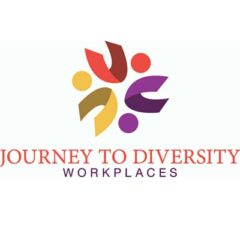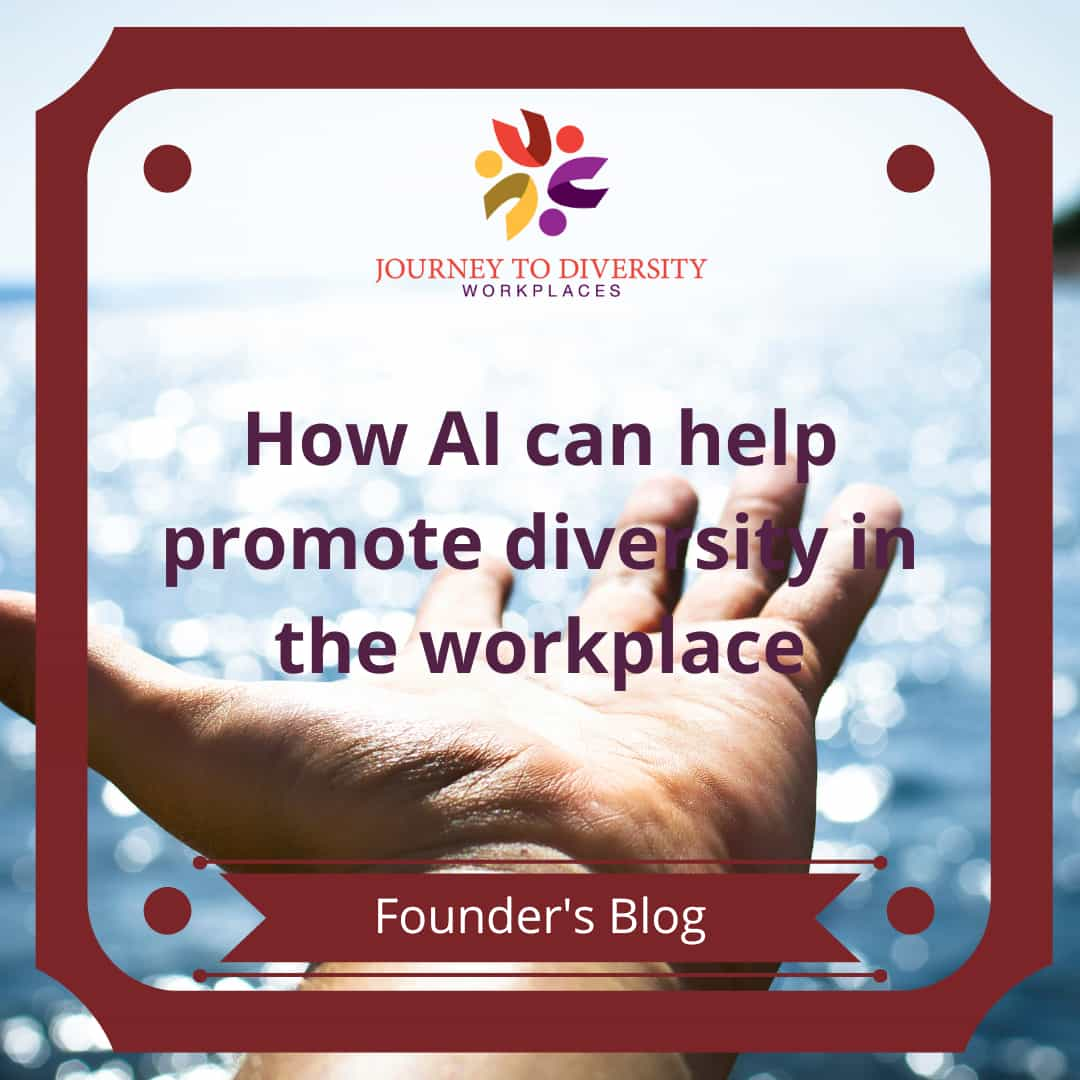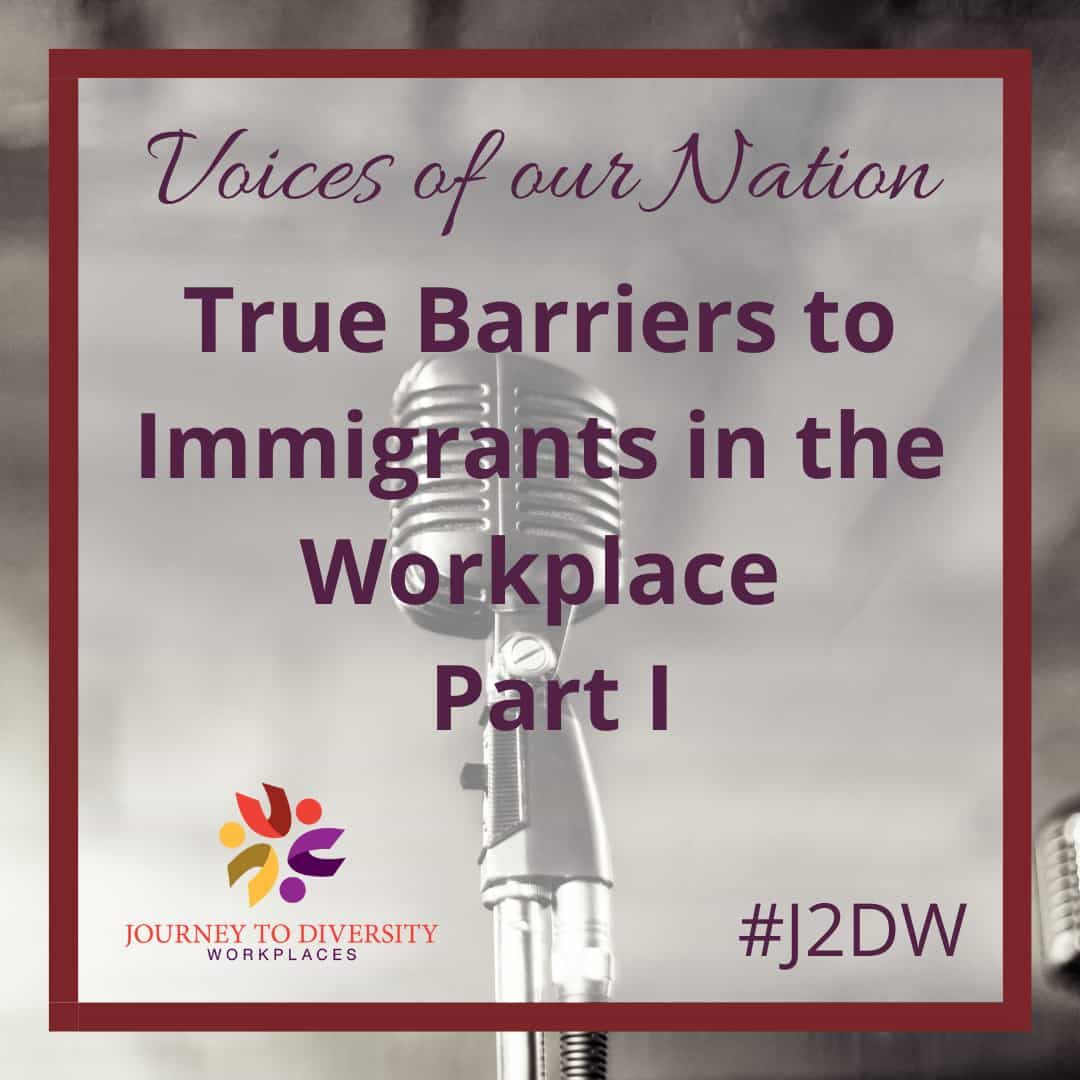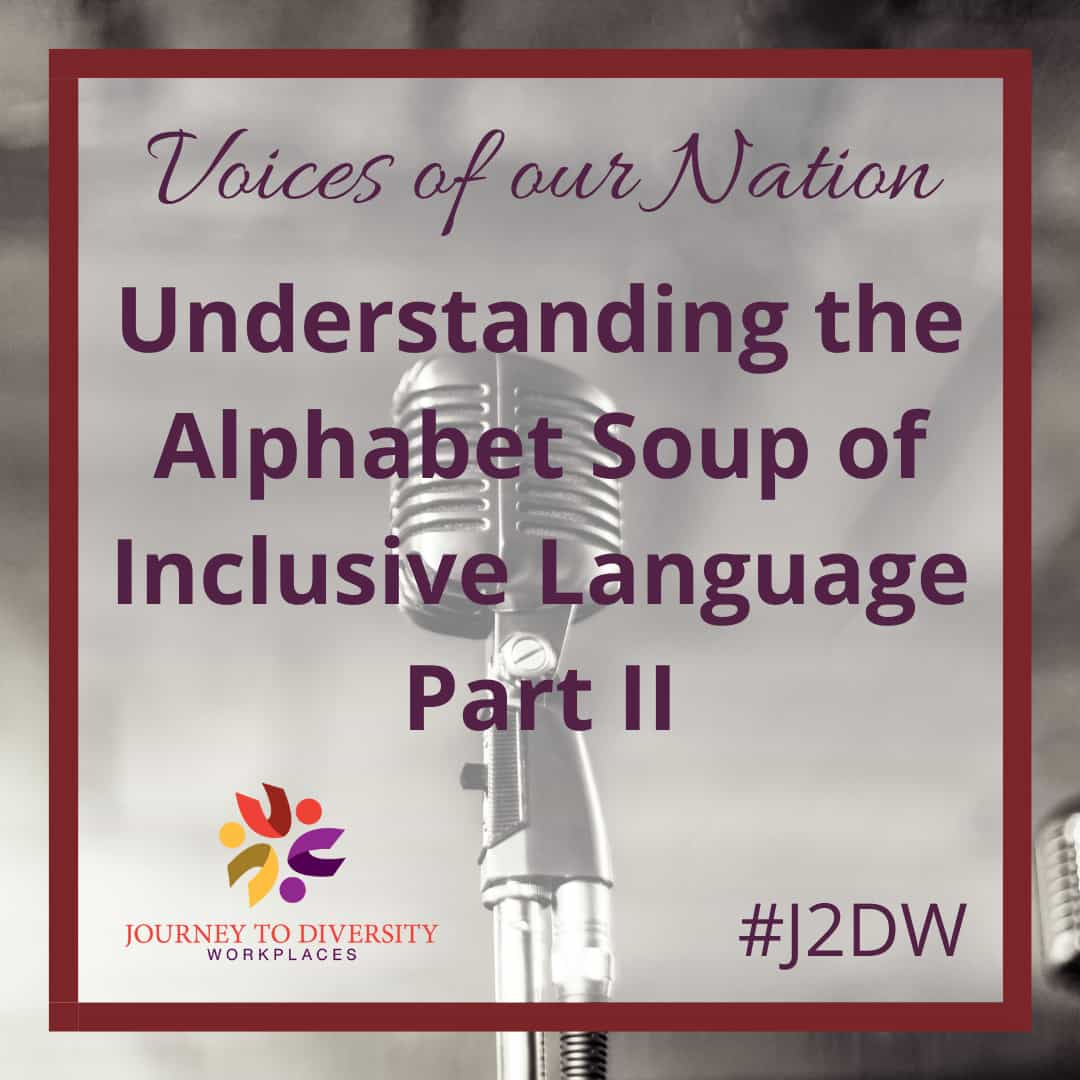This blog post is the second instalment of a series. The first post in this series introduced the idea of inclusive language and provided a beginner’s guideline on its use when addressing racialized employees. This second instalment focuses on disability, gender, and sexuality.
Making use of inclusive language is a significant way in which you can establish your organisation’s commitment to diversity, and communicate to clients and employees that your workplace is a welcoming environment that respects others’ identities. As you begin to use inclusive language more regularly, you may find yourself adopting terms and phrases that are new to you, some of which may challenge your preconceived notions of the structure of your society. But a commitment to diversity and allyship requires the flexibility of an open mind and a willingness to learn.
When it comes to matters of disability, one phrase you may or may not have encountered is person-first language. Person-first language is based on the view that people are complex and cannot be pared down to any single aspect of their identities (Ferguson & Bellamy, 2022). In practice, person-first language describes “a person with a disability” rather than “a disabled person.” While the intention behind person-first language comes from a place of respect, it is actually a point of contention within the disability community. Many of its members prefer to use identity-first language, and opt to self-describe as “a disabled person.”
To some, the aim of person-first language to centre upon personhood doesn’t achieve its goal of making disabled people feel more included. Instead, it makes it seem as if an individual’s disability is something negative, something they should want to be separated from, rather than another characteristic like hair colour, gender, or religion (Liebowitz, 2015). In reality, a person’s disability is integral to the way they live their life; it is often a meaningful component of their identity (Brown, n.d.). Consequently, many disabled people prefer identity-first language because it comes from a place of disability pride and more accurately underscores the reality of being disabled. Identity-first language is preferred by many disability activists, especially within the Deaf and autistic communities (National Center on Disability and Journalism [NCDJ], 2021).
It’s important to recognize that there is no singular approach when it comes to the appropriate use of identity-first vs. person-first language. After all, some within the disability community, such as those with intellectual disabilities, prefer person-first language (Liebowitz, 2015). At the end of the day, it’s considered best practice to use the terminology that those with disabilities would prefer, not what allies or what parent and physician groups have to say. When addressing disabled employees and clients, consider asking them what language they’re most comfortable with. When conferring with individuals is not an option, it would be best to research which terms tend to be preferred by that subcommunity in particular. Note that suggestions regarding the use of person-first language are not as straightforward as some diversity guidebooks may have you believe. Simply being thoughtful with the terminology you use is an important component of applying inclusive language effectively; in most cases, it is not a simple checklist of dos and don’ts.
Meanwhile, the use of queer-inclusive language can present its own set of complexities. There are a number of different subgroups within the queer community. Some, like the asexual or intersex communities, receive little attention in the media, with the result that public understanding of those communities is limited. It’s best to turn to queer-run organizations for guidelines on what language to use when referring to different members of the LGBTQ+ community. Organizations like Pride at Work Canada (PaWC) and The 519—Toronto’s main queer community centre and charity—both provide resources on the definitions and usage of LGBTQ+ terminology (and, in the case of PaWC, offer a course designed specifically for employers on queer history and phrases, which is linked below).
Although it isn’t feasible to discuss the nuances of every queer identity in existence in one blog post, J2DW can offer a few key pointers. When addressing the community as a whole, it is widely accepted to use the phrases “queer” and “LGBTQ+.” Most queer people use these phrases interchangeably when speaking about their community. If you are addressing one employee, it is usually acceptable to refer to their particular identity if they have shared it with you. However, if an employee self-identifies as a member of the LGBTQ+ community but has not shared more specifics about their identity, it is inappropriate to request that they go into more detail. Gender identity and sexual orientation are deeply personal matters, and there are a number of reasons behind why an employee may have chosen not to share the specifics of their identity at their workplace. If you aren’t sure how to address an LGBTQ+ individual, the umbrella term “queer” is generally a safe bet, and that individual will let you know if they’d prefer to be addressed in some other way.
Respecting people’s gender identities is a crucial component of creating a queer-inclusive workplace, and the language you use should reflect that. Do not make assumptions about the gender identity of your employees and clients, and always refer to them by the correct name and pronouns regardless of what their official ID might indicate (Vulpe, 2018). There’s also a chance that you may find yourself referring to someone who uses they/them pronouns. Using singular they/them pronouns might be confusing at first, but you’ve probably been using them already without even realizing it. Take the case, for example, of having found an abandoned wallet in public. “Someone lost their wallet,” you might think. “I should check to see if there’s any ID inside and notify the owner so they can pick it up.” It’s also best to use gender-neutral pronouns when talking about individuals in a hypothetical or general sense; doing so is in fact more natural than the clunky he/she, and it is inclusive of everyone regardless of their gender identity (Ferguson & Bellamy, 2022).
Of course, groups of people sometimes disagree over preferred terminology. Members of a community, such as the LGBTQ+ community, are not a monolith. Queer people may unite over a broader shared experience, but they are still individuals with diverse opinions and their own personal life events that have shaped the way they navigate and present themselves to the world. If you are engaging with one specific employee or group of employees who happen to prefer a different term of address than what is commonly preferred by those who share their identity, always ensure you meet those individuals’ wishes. A workplace cannot be included unless the individual needs of the people within that workplace are met.
As you learn more about adopting inclusive language into your vocabulary, understand that you are likely to make mistakes and that these are a natural part of the learning process. In these instances, the best you can do is apologize to the people you might have unintentionally hurt and try to ensure that your use of terminology is amended in the future. Though you may become frustrated, embarrassed, or ashamed when you make mistakes, try to view these occurrences as an opportunity for growth. Intent will take you a long way on the road to promoting diversity, and your concern over being respectful towards those who might be different from you will help you overcome some hurdles as you adjust to using new terminology.
Sources
Brown, L. (n.d.). Identity-First Language. Autistic Self Advocacy Network. Retrieved August 13, 2022, from https://autisticadvocacy.org/about-asan/identity-first-language/
Disability Language Style Guide. National Center on Disability and Journalism. (2021, August). Retrieved August 13, 2022, from https://ncdj.org/style-guide/
Ferguson, J., & Bellamy, R. (2022, May 20). How to get better at using inclusive language in the workplace. Fast Company. Retrieved August 13, 2022, from https://www.fastcompany.com/90753901/how-to-get-better-at-using-inclusive-language-in-the-workplace
LGBTQ2S Glossary of Terms. The 519. (2020, February). Retrieved August 13, 2022, from https://www.the519.org/education-training/glossary
LGBTQ2+ 101: History, terms and phrases. Pride At Work Canada. (n.d.). Retrieved August 13, 2022, from https://education.prideatwork.ca/LGBT101.html
Liebowitz, C. (2015, March 12). I am Disabled: On Identity-First Versus People-First Language. The Body Is Not An Apology. Retrieved August 13, 2022, from https://thebodyisnotanapology.com/magazine/i-am-disabled-on-identity-first-versus-people-first-language/
Vulpe, J. H. (2018, May 7). Listen Before You Speak: Discussing Trans and Gender-Diverse People in the Media. The 519. Retrieved August 13, 2022, from https://www.the519.org/news/media-reference-guide-01-18
This article was written by summer student Cossette Penner-Olivera and edited by summer student Bayden Summers. This article was funded by the Government of Canada.



